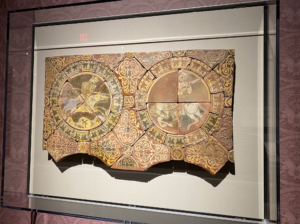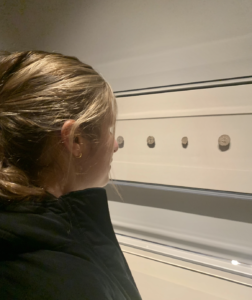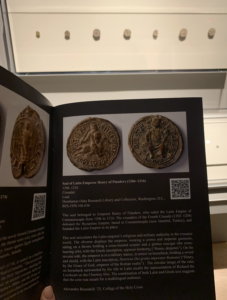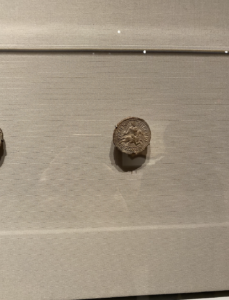Holy Cross prides itself on the intersectionality of student scholarship and our communities, both near and far. It’s certainly a part of the Jesuit tradition that I find myself deeply committed to. Given Holy Cross’ top-tier academic instruction and resources, our commitment to the Worcester community (and beyond), and our scholarship goes beyond the walls of our historic Fenwick Hall.
I recently reported back on the new Prior Performing Arts Center and how integral it is for our campus community. If you remember, you might have gotten a passionate request to come to the new Cantor Art Gallery to see the inaugural historical exhibit: “Bringing the Holy Land Home: The Crusades, Chertsey Abbey, and the Reconstruction of a Medieval Masterpiece.” Well, I am ecstatic to say that the Holy Land has finally made its way “home” on St. James Hill.
Across several semesters, different sections of the Art History class, “Kings and Caliphs: Art of Luxury,” spent countless hours researching a particular object that would be highlighted in the exhibit. And, after years of research by the leading curator, Professor Amanda Luyster, and students along the way, the exhibition was finally a reality. The exhibition activities began with a guest lecture by Dr. William Purkis from the University of Birmingham on “Bringing the Holy Land Home: Crusaders, Relics, and the Transformation of Latin Christendom’s Sacred Material World.” This was an appropriate and engaging talk to put our Jesuit identity in connection with the Islamic and Crusader Art that would be living on our campus for the next couple of months.

After the lecture concluded, I could feel the anticipation from everyone as we made our way up to the Cantor Art Gallery. I was feeling a great deal of honor and privilege being able to study under the incredible guest curator, Professor Luyster. The exhibition was phenomenal. So amazing, you’ll have to come yourself to see it! You’ll certainly regret it if you don’t. It’s not everyday that you can see all of these objects in physical conversation with one another.

Like I mentioned before, I was in one of Professor Luyster’s classes on Crusader art. So, we had the opportunity to research an object that would be highlighted in the exhibition. As many professors and advisors have told me in the past, there is nothing like seeing something you’ve worked so hard on for the first time. And, even though the seal I worked on was tiny, it was still mighty. Nonetheless, I was so proud to see it there in the flesh. You know, someone nearly 800 years ago got a letter with that very seal on it. Now we have it. How crazy is that? It’s something you can say about every object in the exhibition, and yet, something you can’t come across very often in your own community.

This is only the beginning of sophisticated student research with professors, advisors, and other professionals in their fields. There are plenty of opportunities at the college for involvement in our studies outside of the classroom. And, this blog post is one of the opportunities I’ve been involved in this year alone; I’ll write some more later. It truly connects our communal Holy Cross identity with our own personal identities. The exhibit closes April 6, 2023; hopefully, you can make it over here before then!


